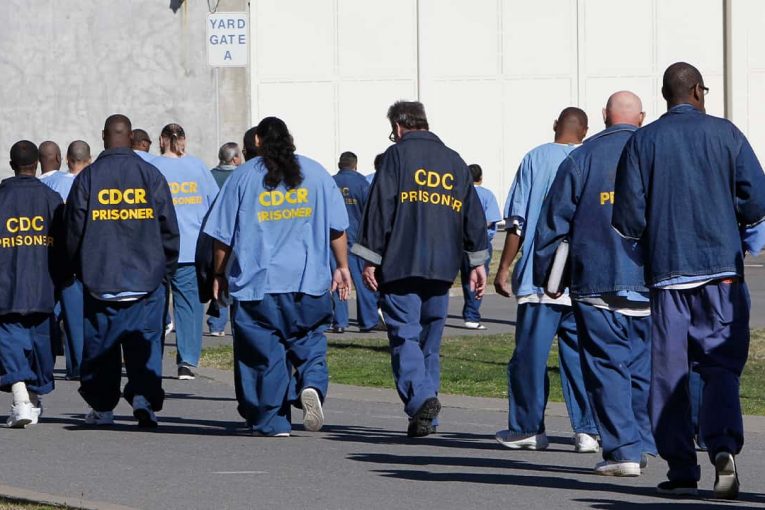
By Julietta Bisharyan and Nick Gardner
CDCR Confirmed COVID-19 Cases and Outcomes
As of March 20, there have been a total of 49,190 confirmed COVID-19 cases in the CDCR system – 33 of them emerged in the last two weeks. 38 cases are active in custody while 613 have been released while active. A total of 48,323 confirmed cases have been resolved since the start of the pandemic.
There have been 216 deaths across the CDCR system. Six incarcerated persons are currently receiving medical care at outside healthcare facilities.
In the past week, one incarcerated person reportedly died from complications associated with COVID-19 at Mule Creek State Prison.
CDCR officials have withheld their identity, citing medical privacy issues.
As of March 20, 70,888 individuals have received first-round vaccines statewide. 26,386 are staff members and 44,502 are of the incarcerated population.
In the past two weeks, the Correctional Training Facility has tested the most individuals— 73 percent of its population. Kern Valley State Prison has tested the least, just 7 percent of its population.
There are currently 94,807 incarcerated persons in California’s prisons – a reduction of 27,602 since March 2020, when the prison outbreaks first began.
Effect on Public
Last May, the decision to transfer 122 individuals from the California Institution for Men to San Quentin sparked a massive outbreak of COVID-19 that has claimed 28 lives to date. The incident, since dubbed the “worst epidemiological disaster in state history” by an appellate judge, sourced a legal challenge from San Quentin resident Ivan von Staich, whose efforts have culminated in a court order for California’s oldest prison to reduce its incarcerated population by roughly 50 percent to 1,775. Since von Staich’s motion in August, a flurry of litigation has mounted against CDCR, the most recent of which comes in the form of a wrongful death lawsuit brought forth by the family of deceased San Quentin resident Daniel Ruiz.
Ruiz, a father of four, was among the first to die following the fateful May transfer. The 61 year old’s asthma and chronic obstructive pulmonary disease (COPD), coupled with his age, placed him at an elevated risk to contract severe symptoms of COVID-19.
Two weeks prior to his death, Ruiz was admitted into the San Francisco hospital. Ruiz’s weeks-long battle with COVID ended on July 11, however the man’s family claims that they were only notified of his situation just days before he passed.
Ruiz’s children described the lack of transparency preceding their father’s death as ‘antagonizing’
“Nobody wants their parents to suffer and die like that,” Daniel Ruiz Jr. said in an address to the media last week. Along with his sister, Vanessa Robinson, Ruiz Jr.’s final moments with Daniel were communicated via Zoom call in lieu of visitor restrictions at the time.
The Ruiz family’s lawsuit will follow lengthy legal efforts by the CDCR in Plata v. Newsom and the aforementioned In re von Staich. Both courts raised significant opposition from the department for their entertainment of early-release measures, which CDCR has staunchly opposed since the beginning of the pandemic. The verdict in In re von Staich will require the department to allocate resources towards complying with the court’s mandate that San Quentin reduce its population by 50 percent.
Thus far, the Plata court has exhibited a degree of influence over CDCR’s pandemic response, ordering that the department introduce a comprehensive staff testing protocol in early June and again stepping in to ensure that quarantine space was being reserved at all facilities in July. Plata is yet to produce von Staich-magnitude demands, however with cases drastically declining throughout the CDCR system the scope of a future verdict is to be determined.
This section contains information first reported by the Guardian. For more, please visit: https://www.theguardian.com/us-news/2021/mar/18/california-coronavirus-prison-system-lawsuit
CDCR Staff
There have been at least 15,997 cases of COVID-19 reported among prison staff. 26 staff members have died while 15,398 have returned to work. 599 cases are still active.
CDCR Comparisons – California and the US
According to the Marshall Project, California prisons rank second in the country for the highest number of confirmed cases, following Federal prisons closely behind. Texas ranks third.
California makes up 12.6 percent of total cases among incarcerated people and 8.6 percent of the total deaths in prison.
California also makes up 15 percent of total cases and 13 percent of total deaths among prison staff.
Division of Juvenile Justice
As of Mar. 20, there are no active cases of COVID-19 among youth at the Division of Juvenile Justice (DJJ) facilities. 204 cases have been resolved since the first case was diagnosed in June.
References:
https://www.theguardian.com/us-news/2021/mar/18/california-coronavirus-prison-system-lawsuit




